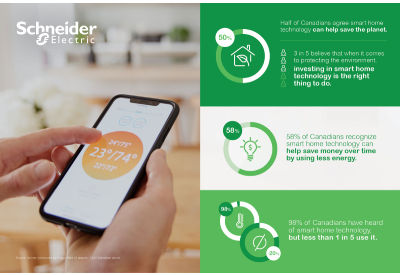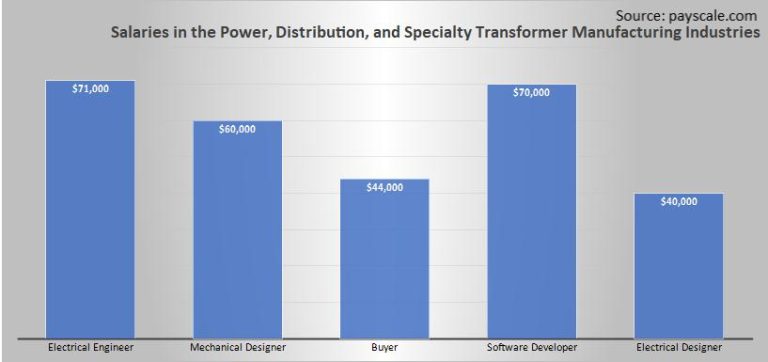Schneider Electric Study Shows Canadian Homeowners are Eager to Embrace Smart Home Technology

April 21, 2022
As the cost of living continues to rise, Canadian homeowners are increasingly seeking solutions that help them save on energy, as well as reduce their carbon footprint. New data from a recent study conducted by Schneider Electric, the leader in the digital transformation of energy management and automation, reveals 73 per cent of Canadian homeowners have seen an increase in their electrical bills in the past year, and most are interested in further integrating energy monitoring systems (71 per cent) and smart switches (63 per cent) into their homes to help combat that rise.
“Beyond cost savings, smart home technology, like Square D and Wiser Energy solutions gives Canadian homeowners incredible visibility into their energy usage which in turn gives them increased control over their energy consumption, while offering an effortless way to reduce their personal carbon footprint.”
Homes and buildings continue to be a significant source of greenhouse gas emissions. After accounting for the electricity used for heating, cooling, lighting, and appliances, they total 18 per cent of national greenhouse gas (GHG) emissions. For Canada to achieve its goal of net-zero emissions, while also encouraging construction of new homes in response the ongoing housing affordability crisis, it is imperative energy solution providers do their part to help homeowners understand and embrace technology aiding us in the fight against climate change.
Encouragingly, the study found Canadian homeowners share this sentiment, with 82 per cent stating they are concerned about how climate change may affect future generations and 3 in 4 (76 per cent) agreeing smart home technology would make it easy to manage energy efficiency. However, while 79 per cent of homeowners are familiar with smart home solutions, less than 1 in 5 (17 per cent) households have currently adopted and integrated the technology.
“Our study found 9 in 10 (89 per cent) Canadian homeowners say it’s important to have energy efficient appliances or devices when buying, building, or renovating a home,” said David O’Reilly, Vice President of Home and Distribution at Schneider Electric Canada. “Beyond cost savings, smart home technology, like Square D and Wiser Energy solutions gives Canadian homeowners incredible visibility into their energy usage which in turn gives them increased control over their energy consumption, while offering an effortless way to reduce their personal carbon footprint.”
To help more homeowners take advantage of this emerging technology, Schneider Electric launched a suite of connected living products aimed at addressing the most common demands of Canadian homeowners when shopping for smart home technology including ease of installation and use, long-term durability and sustainability.
Designed to make life easier with the end-user in mind, products such as Schneider Electric’s Square D Wiring Devices appeal to homeowners by saving them energy, while also offering them unprecedented control of their home from an easy-to-use smart phone application. Additionally, these devices incorporate unique and thoughtful design, built to complement any taste or style.
“Encouraging further adoption of smart home technology will not only help households reduce their individual carbon emissions, but also encourage them to reimagine what it means to live sustainably,” said O’Reilly. “With 3 in 5 homeowners agreeing that adopting smart home technology is “the right thing to do” for the environment, Canadians continue to recognize the importance of reducing energy consumption and lessening their environmental impact wherever possible.”










![Guide to the Canadian Electrical Code, Part 1[i], 26th Edition – A Road Map: Section 10 – Grounding and Bonding](https://electricalindustry.ca/wp-content/uploads/2022/11/Guide-CE-Code-2.png)





